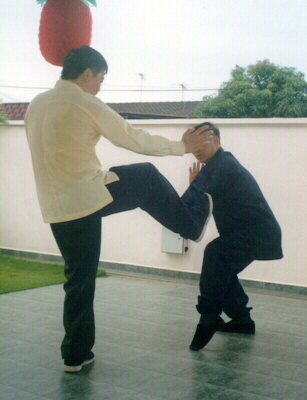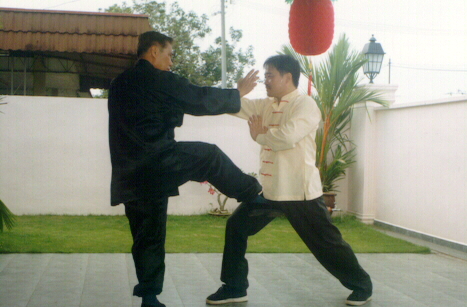PRO AND CON OF COMBINING OR ADDING FORMS

White Horse Presents Hoof
Question
There are several stories of classical kung fu masters and even modern masters "mixing" together various styles and sets to create combinations. Examples that I can think of are the Tiger-Crane set of Hoong Ka, Choy Li Fatt's three progenitor systems, Dong Hai Chuan's Baguazhang students (who were already accomplished in other arts) and even your own experience (if my memory is correct) in adding certain hand forms to the One Finger Shooting Zen set.
How can a master be sure that any modifications that he makes to a particular form do not dilute or otherwise distract from the advantages that are already there in the original forms?
-- Frederick Chu
Answer
A master is sure from his understanding and experience. If he is not sure, he may dilute or distract from the advantages already present in the original forms. Worse, he may cause harmful effects.
Let us take two examples.
Hoong Hei Khoon was a master of the tiger form. He understood the form well, and had much experience in using the forms effectively.
His wife, Fong Wing Choon, was a master of the crane form. From his wife, Hoong Hei Khoon learned the crane form, which he also had much understanding and experience.
From his understanding and experience, Hoong Hei Khoon found that while his tiger form was excellent for combat, there were occasions when he could further improve his combat efficiency by adding a crane form.
For example, instead of using a thrust kick as in "White Horse Presents Hoof" which was found in his tiger form, he could use an organ-seeking kick as in "White Crane flaps Wings" which needed less effort, was less conspicuous, and more deadly.
So he included some crane patterns into his tiger form, resulting in the famous Tiger-Crane Set. He fully understood what he was doing, and realized the pro and con of adding crane patterns to his tiger form. He also had much experience of the resulting benefits.
Now let us take an example of a modern kungfu master. Although he is called a master out of respect, he has no understanding and no experience of using his kungfu form to develop internal force or for combat.
When he sees other martial artists using weights and kick-boxers sparring, he is impressed. So he incorporates into his school weight lifting as a force training method and kick-boxing for sparring purposes. He may even call his art kungfu-do.
He does not have a deep understanding of weight-lifting and kick-boxing. For example, he does not understanding that developing big muscles in weight-lifting causes energy blockage, and that free exchange of blows in kick-boxing causes him internal injuries.
He also has no experience of weight-lifting and kick-boxing enriching his kungfu. He has a mistaken concept that big muscles and kick-boxing improve his combat efficiency, not knowing his combat efficiency would be much better had he known how to apply kungfu for combat, and also not realizing that weight-lifting and kick-boxing have brought him harmful effects.
Hence, by mixing weight-lifting and kick-boxing with kungfu, this modern master has diluted and distracted from his original kungfu form, and has actually brought harmful effects to himself and his students. Such harmful attempts to create combinations without proper understanding and experience, unfortunately, are not uncommon nowadays.
In my case I added the cup fist in "Big Boss Offers Wine" from my fourth sifu, Sifu Choe Hoong Choy, who was a patriarch of Choe Family Wing Choon Kungfu, to what I learned from my third sifu, Sifu Ho Fatt Nam, who was the third generation successor of the Shaolin Kungfu of Quanzhou, in my training of One-Finger Shooting Zen. I knew very well why I added to my One-Finger Zen training.
-- Grandmaster Wong Kiew Kit

White Crane Flaps Wings
The above is reproduced from the thread 20 Questions for Grandmaster: Choy-Li-Fatt and Kungfu against Other Styles in the Shaolin Wahnam Discussion Forum.

LINKS
